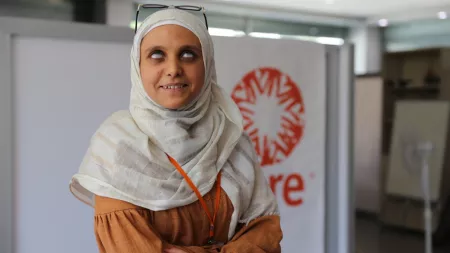The Case for Expanding Blind Charities Internationally: A Global Perspective

Blindness and visual impairments affect millions worldwide, limiting access to education, employment, and independence. Despite significant advances in accessibility, there remains a stark disparity in services and resources between countries. For blind charities, expanding their operations internationally could bridge this gap, ensuring that those in need receive support and empowerment. In this article, we’ll explore the compelling case for why blind charities should consider expanding internationally and the lasting impact it can have on communities around the world.
I. A Global Need for Accessible Services
Blindness is not confined to a specific region or country. According to the World Health Organization (WHO), approximately 2.2 billion people suffer from some form of vision impairment globally. The majority of these individuals reside in low-income countries, where access to resources for blindness prevention and treatment is often limited or non-existent.
By expanding internationally, blind charities can address the following:
Lack of Rehabilitation Services: In many regions, specialized rehabilitation services for the blind are scarce or non-existent. International expansion allows these charities to bring essential rehabilitation services, such as mobility training and orientation skills, to those in need.
Inadequate Education and Employment Opportunities: Many individuals with visual impairments in developing countries struggle to access education or secure employment due to a lack of resources and support. Blind charities can provide tools like accessible learning materials, assistive technologies, and vocational training, ultimately helping to reduce societal exclusion.
II. The Power of Global Collaboration
Expanding blind charities internationally also creates opportunities for global collaboration. By working together, organizations can share knowledge, best practices, and resources, ultimately improving the lives of those affected by visual impairments.
Cultural Exchange and Awareness: When blind charities work across borders, they foster cross-cultural understanding. International partnerships allow charities to learn from one another’s successes and challenges, which strengthens their ability to serve diverse populations. It also raises awareness of the specific needs of visually impaired individuals in different cultural contexts.
Leveraging Technology: Technology has the potential to level the playing field for individuals with visual impairments. Expanding internationally provides the chance to introduce new assistive technologies to underserved regions. For example, smartphones equipped with voice assistants or screen readers could dramatically improve access to information and communication in countries where these technologies are underutilized.
III. The Benefits of International Outreach
While expanding internationally poses challenges, the benefits of doing so far outweigh the difficulties. Some of the key advantages include:
Enhanced Visibility and Advocacy: An international presence elevates the visibility of blind charities and their causes on a global scale. This increased awareness can lead to greater advocacy, policy change, and government support for blind individuals in various countries. As these charities advocate for the rights of visually impaired people, they can influence international laws and standards on accessibility and inclusion.
Sustainability and Growth: International expansion allows blind charities to diversify their funding sources. By attracting donors from various parts of the world, they can build a sustainable model that is not reliant on a single region’s economic situation. Moreover, this expansion creates new opportunities for partnerships with international organizations, such as the United Nations, World Bank, and others, that can provide funding and support.
Improved Outcomes for Individuals: Ultimately, the goal of expanding internationally is to improve the lives of individuals with visual impairments. Through global outreach, charities can help improve access to health care, education, and employment opportunities, leading to greater independence and quality of life for visually impaired people in underserved areas.
IV. Overcoming the Challenges of International Expansion
While the case for expanding blind charities internationally is strong, challenges exist. These include language barriers, cultural differences, logistical difficulties, and varying levels of government support. However, these obstacles can be overcome with the right approach:
Partnerships with Local Organizations: Collaborating with local NGOs or community-based organizations can help charities understand regional needs and overcome logistical challenges.
Adaptation of Services: Charities must be flexible and willing to adapt their services to meet local needs. For example, training and resources may need to be tailored to different languages, customs, and regional healthcare systems.
Conclusion
Expanding blind charities internationally offers the chance to make a lasting, global impact on individuals who are often overlooked or underserved. By addressing the needs of visually impaired individuals in developing regions, charities like Living Paintings blind charity can foster collaboration, introduce life-changing technologies, and create a more inclusive world. Despite the challenges, the potential benefits—improved visibility, advocacy, and sustainable growth—make international expansion a compelling and worthwhile goal for any blind charity. Through such initiatives, we can help empower millions of people and change the narrative around blindness and disability worldwide.



